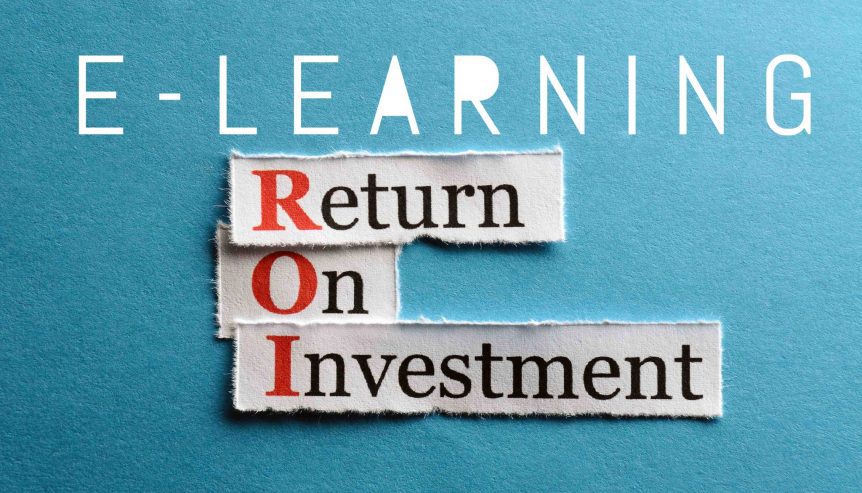E-Learning ROI
Whether you are thinking of using e-learning for the first time or you already use it, understanding its Return on Investment (ROI) is crucially important for your business.
ROI is not as easy to define, however, as other elements of e-learning. For example, it is easy to list the benefits:
- Available on demand so suits the needs of learners
- More interactive and engaging than other forms of learning
- Less disruptive than other forms of learning, particularly instructor-led learning
- Ensures there is consistency in the learning delivered
- Easy to assess the progress of learners
It is also relatively simple to demonstrate the cost benefits of e-learning compared to other forms of learning. Take instructor-led learning as an example as it is one of the main alternatives you have when deciding how to deliver training in your organisation. E-learning is more cost-effective than instructor-led learning for several reasons:
- There is no travel involved
- You don’t need instructors or trainers
- Learners potentially spend less time completing the course as they can progress through modules at a pace that suits them
- E-learning is repeatable so the costs are similar whether you have tens of learners or thousands
In addition, it is easy to define e-learning statistics:
- Time spent on learning initiatives – 35-45% less
- Progress through the learning curve – 60% faster
- Skills and knowledge retention – 50% higher
- Consistency of learning – 60% increase
None of these things, however, define the ROI for your organisation. They don’t help you move closer to the answer either.
Measuring E-Learning ROI
At Capytech, I use the Phillips model to help our clients measure e-learning ROI. The Phillips model is a variation of the Kirkpatrick model – both are respected and tested models for evaluating the ROI of training and learning.
One of the benefits of using this model is that it was not designed for evaluating e-learning. Instead, you can use the Phillips model to evaluate all training and learning activities.
The model has five levels:
- Reaction
- Learning
- Behavioural changes
- Business impact
- Results
Going through each of the levels will give you essential data on how successful the learning is as well as the return on your investment.
Level 1 – Reaction
This involves getting immediate feedback from learners by asking them their opinion on the course. As part of the design process, we can tailor the questions we ask learners so they are relevant to your business. The things we seek to find out include whether they liked the course, whether they found it interesting, and whether they found it useful and worthwhile.
This is important to the ultimate success of the learning initiative as positive reactions help to improve ROI, i.e. learners who like and engage with a course are more likely to put what they learn into action.
Level 2 – Learning
This is probably the easiest level to measure. In fact, it is typically part of every course we produce. It involves adding quizzes and tests to the various modules in your course to check and assess the learner’s progress. The scores in those tests are helpful to the learning process, i.e. they will show you and the learner where further improvement is needed. Collective assessment scores can also help you evaluate the overall success of the course.
Level 3 – Behavioural Changes
Your involvement is crucial at this stage as this level involves assessing whether learners put into action the things they learn in the e-learning course. This is usually achieved by evaluating the learner’s behaviour. For example, do they use newly learned skills when completing tasks, or do they continue to use old methodologies?
Level 4 – Business Impact
This stage looks at how the behavioural changes you identify in the previous stage impact your business. For example, what are the productivity or efficiency gains to the business of an employee using a new skill?
Level 5 – Results
In this final stage, you should now put numbers on your evaluation, particularly using the previous stage. This could be, for example, putting a number on the productivity or efficiency gains you identify.
When you compare these results to the costs you incur developing the e-learning course, you will know the full ROI.
The full ROI is:
- How well learners engage with the training
- The effectiveness of the training
- Whether learners put the training to practical use
- How your business improves as a result of the training
- The financial benefits to your business of those improvements
You can then use this knowledge when taking future decisions on learning and training in your organisation.
